What defines the authentic character of this Moroccan Jambiya Koummya dagger?
The Moroccan Jambiya Koummya Handmade Dagger represents a traditional Berber blade known for its symbolic value, refined craftsmanship, and historical authenticity. Its origins lie in centuries-old tribal traditions in Morocco, where the Koummya dagger served more as a sign of prestige and cultural identity than a combat weapon. Each piece is handcrafted using age-old techniques that have been preserved through generations. The stainless steel blade is shaped with precision to maintain sharp lines and a balanced form. The handle is carved from genuine goat bone, offering a tactile texture and natural color variations.
This dagger carries visible artisanal traits, including slight imperfections that highlight its handmade nature. Unlike mass-produced items, it preserves individual craftsmanship details, making every piece unique. The black handle stands out for its contrast with the bright blade, creating a distinguished aesthetic that mirrors traditional Moroccan elegance.
Key points:
- Authentic Moroccan Berber Koummya design.
- Goat bone handle with black finish.
- Stainless steel blade with artisanal craftsmanship.
- Handmade with visible imperfections as a mark of authenticity.
- Symbol of cultural identity and elegance.
How does the traditional Koummya dagger reflect Moroccan cultural heritage?
The Koummya dagger is rooted in the Berber tradition, carried for centuries by tribes in the High Atlas region of Morocco. Historically, this dagger signified status and belonging, rather than serving as a tool for defense. It was typically worn on the left side, with the scabbard tip forward, suspended by a cord from the right shoulder. This specific placement and the curve of the blade reflect long-standing cultural customs.
The dagger belongs to a wider family of Arabic jambiyas that spread across the Arabian Peninsula, yet it maintains distinct Moroccan features—particularly its slim blade profile, elegant curvature, and ornamental hilt. Its presence at cultural ceremonies, festivals, and traditional dress showcases its enduring importance as a symbol of heritage.
Key points:
- Deep connection to Berber cultural identity.
- Traditional wearing style reflects Moroccan customs.
- Derived from Arabic jambiya designs with regional uniqueness.
- Still worn in cultural and ceremonial events.
- Reflects both history and artistry.
What makes the materials of this dagger stand out from modern reproductions?
Unlike factory-made replicas, this dagger uses genuine materials selected for their durability and aesthetic appeal. The blade is forged from stainless steel, chosen for its resistance to wear, moderate rust resistance, and ability to maintain form over time. The hilt is constructed from natural goat bone, a material long valued for its tactile quality, smooth texture, and structural strength.
The combination of metal and bone creates a balanced weight that feels grounded in the hand. Stainless steel offers practicality for display, while goat bone adds cultural authenticity and organic variation in tone and texture. The black handle finish enhances the contrast with the steel, giving the dagger a bold and elegant profile.
Key points:
- Stainless steel blade ensures durability.
- Goat bone handle offers traditional authenticity.
- Natural materials create unique variations.
- Solid weight balance for display or handling.
- Distinct from plastic or resin reproductions.
How does the craftsmanship reflect traditional Moroccan forging techniques?
Each dagger is handmade by skilled Moroccan artisans who follow forging methods passed down through generations. The blade is hand-shaped from stainless steel, ensuring that its curve and thickness match traditional Koummya proportions. The handle is carved and polished from goat bone, then carefully attached to the tang for a secure fit.
The scabbard is crafted to complement the blade’s dimensions, typically featuring decorative details that highlight traditional Moroccan motifs. The imperfections visible in the surface are a result of manual shaping rather than factory precision. These details show the personal hand of the maker and distinguish it as a traditional object.
Key points:
- Hand-forged blade using traditional tools.
- Bone carving and attachment done manually.
- Unique surface imperfections as signs of craftsmanship.
- Scabbard built to fit blade dimensions precisely.
- Traditional motifs enhance the dagger’s heritage value.
What are the detailed specifications and measurements of this dagger?
This Koummya dagger follows precise dimensions that balance elegance and function. The total length is 51 cm (20.07 in.), giving it a visually striking yet manageable size for display. The hilt length measures 27 cm (10.62 in.), offering a comfortable grip and enhancing the dagger’s ceremonial character.
The blade length is 22 cm (8.66 in.) with a spine thickness of 3 mm (0.11 in.), giving it a sleek and sharp-edged profile suitable for traditional form. The scabbard length is 25 cm (9.84 in.), designed to match the blade’s curvature and tip. The proportions reflect classic Moroccan Koummya shapes, where the handle is often longer than the blade for ornamental and symbolic purposes.
Key points:
- Total length: 51 cm / 20.07 in.
- Hilt length: 27 cm / 10.62 in.
- Blade length: 22 cm / 8.66 in.
- Spine thickness: 3 mm / 0.11 in.
- Scabbard length: 25 cm / 9.84 in.
How can this dagger be used for decorative and collectible purposes?
The Koummya dagger holds strong value as a decorative and collectible artifact. Its intricate shape, elegant curve, and mixed materials make it suitable for wall displays, collector’s cabinets, or cultural exhibitions. The long hilt and slender blade give it a visually balanced profile that enhances traditional interior designs, especially those inspired by Moroccan or Arabic aesthetics.
Collectors often seek Koummya daggers as symbolic items rather than weapons, appreciating their historical significance and handmade qualities. The black handle and polished blade create a striking contrast under display lighting. Its cultural weight and authentic craftsmanship also make it a favored item for antique-style collections.
Key points:
- Ideal for wall mounting and cultural displays.
- Popular among collectors of traditional weapons.
- Aesthetic contrast suits interior decoration.
- Lightweight and balanced for easy display.
- Represents Moroccan craftsmanship.
What maintenance practices help preserve the dagger’s quality?
Proper care ensures that the dagger maintains its appearance and structure over time. The stainless steel blade should be wiped with a soft, dry cloth to prevent moisture accumulation. A thin coat of protective oil can reduce the risk of surface rust, especially in humid environments. The goat bone handle benefits from gentle cleaning with a dry or slightly damp cloth, avoiding harsh chemicals that could damage its finish.
Because the blade is handmade, minor surface rust can occasionally appear. This can be gently removed with fine steel wool or a rust eraser without affecting the blade’s integrity. Displaying the dagger in a dry, well-ventilated area helps preserve both metal and bone components.
Key points:
- Regular dry wiping prevents moisture damage.
- Light oiling maintains blade condition.
- Avoid chemical cleaners on bone handle.
- Gentle rust removal if needed.
- Store in a dry environment.
How does the Koummya compare to other Arabic jambiya styles?
While the Koummya shares its roots with the Arabic jambiya, it has a noticeably slimmer and more elongated blade. Traditional jambiyas often have wide, curved blades used historically for close combat, whereas the Moroccan Koummya emphasizes elegance and cultural symbolism. Its longer hilt and slender blade make it more decorative than utilitarian.
Another difference lies in the handle design. Moroccan versions often use bone, silver, or wood with distinctive shapes that curve slightly inward at the pommel. The scabbard is typically longer and tapered compared to the wide and short jambiya sheaths seen in Yemen or Oman. These subtle design distinctions highlight Morocco’s localized adaptation of a widespread traditional weapon.
Key points:
- Slimmer blade compared to other jambiyas.
- Longer hilt reflects Moroccan ceremonial use.
- Distinct scabbard design.
- Bone materials versus common horn or metal elsewhere.
- Decorative focus over combat purpose.
What makes each handmade Koummya dagger unique?
No two Koummya daggers are identical. Hand-forging creates subtle variations in blade curvature, bone grain, handle finish, and decorative detailing. These differences make each piece an individual work rather than a standardized item. The artisan’s personal touch is reflected in the slight asymmetries, surface marks, or variations in polish.
The goat bone handle may display different natural color patterns, ranging from creamy white to darker shades. The blade’s finish may show light tool marks, which authenticate its handmade origin. These unique characteristics add collectible value and distinguish the dagger from machine-made reproductions.
Key points:
- Each piece has individual variations.
- Natural bone patterns make every handle distinct.
- Blade tool marks reflect hand forging.
- Slight asymmetries enhance authenticity.
- Adds collectible value.
How does this dagger fit within traditional and modern collections?
The Koummya dagger bridges the past and present by retaining its traditional form while fitting seamlessly into modern collections. It can be displayed in homes, galleries, or museums, often alongside traditional garments like djellabas or kaftans. Interior designers use such pieces to bring a cultural and historical element into spaces, creating focal points that draw attention.
Modern collectors value Koummya daggers for their craftsmanship, symbolic significance, and ability to pair with other Arabic or North African artifacts. Their balanced proportions and distinct silhouette make them versatile for both minimal and richly decorated interiors.
Key points:
- Works well in both traditional and modern interiors.
- Complements other Arabic or Berber artifacts.
- Popular in cultural and historical collections.
- Visually striking display piece.
- Bridges cultural tradition with contemporary design.

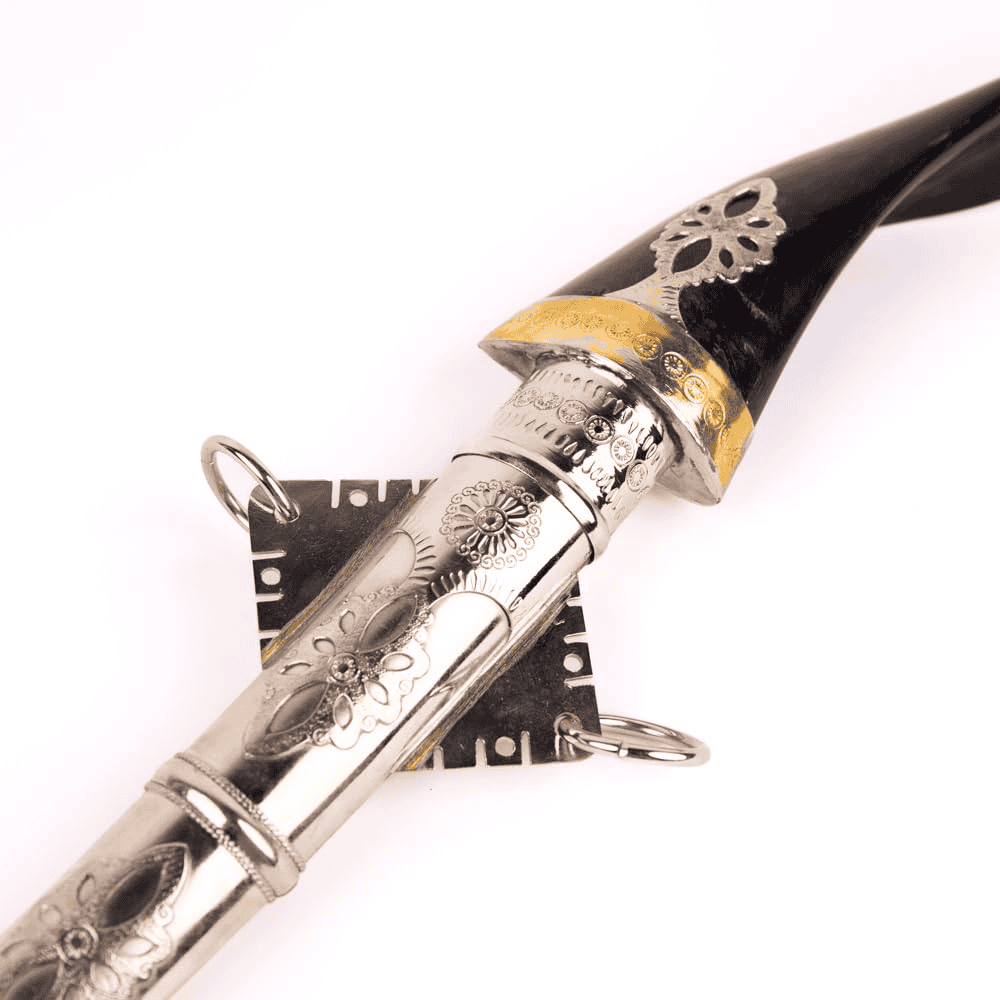
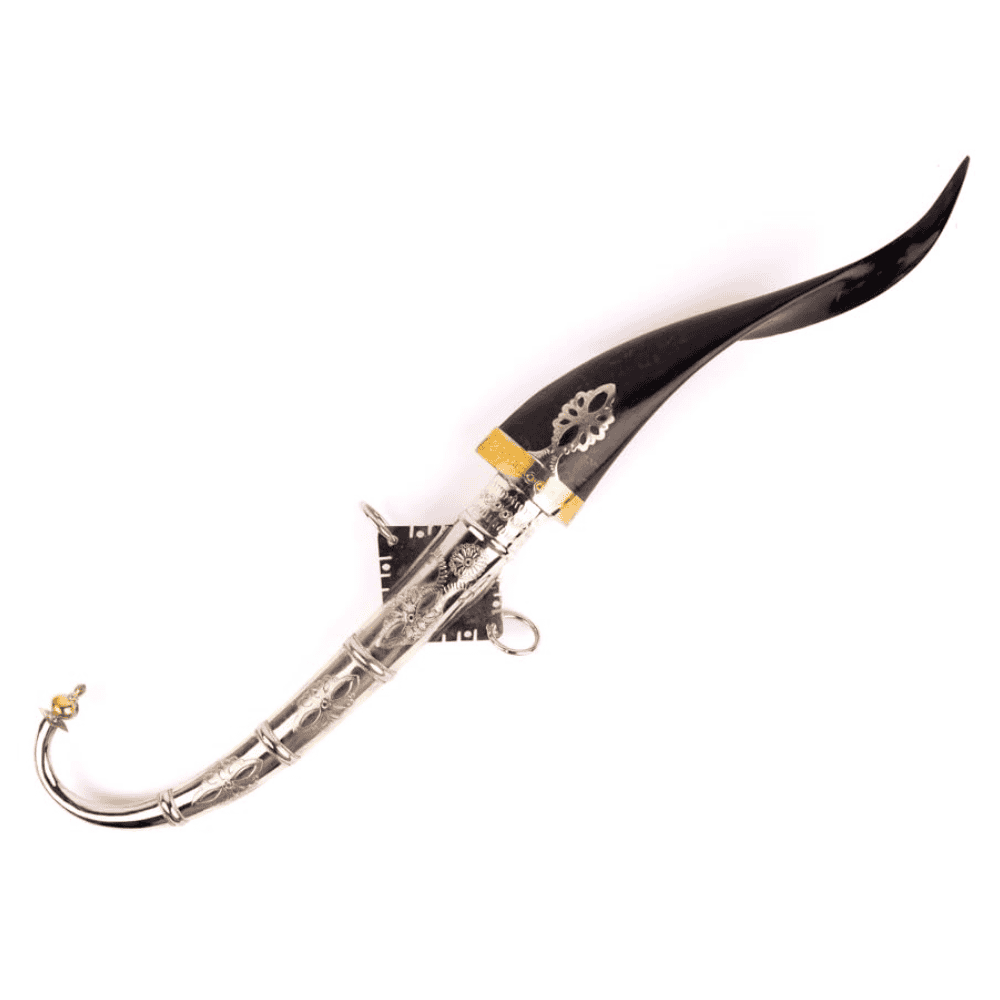
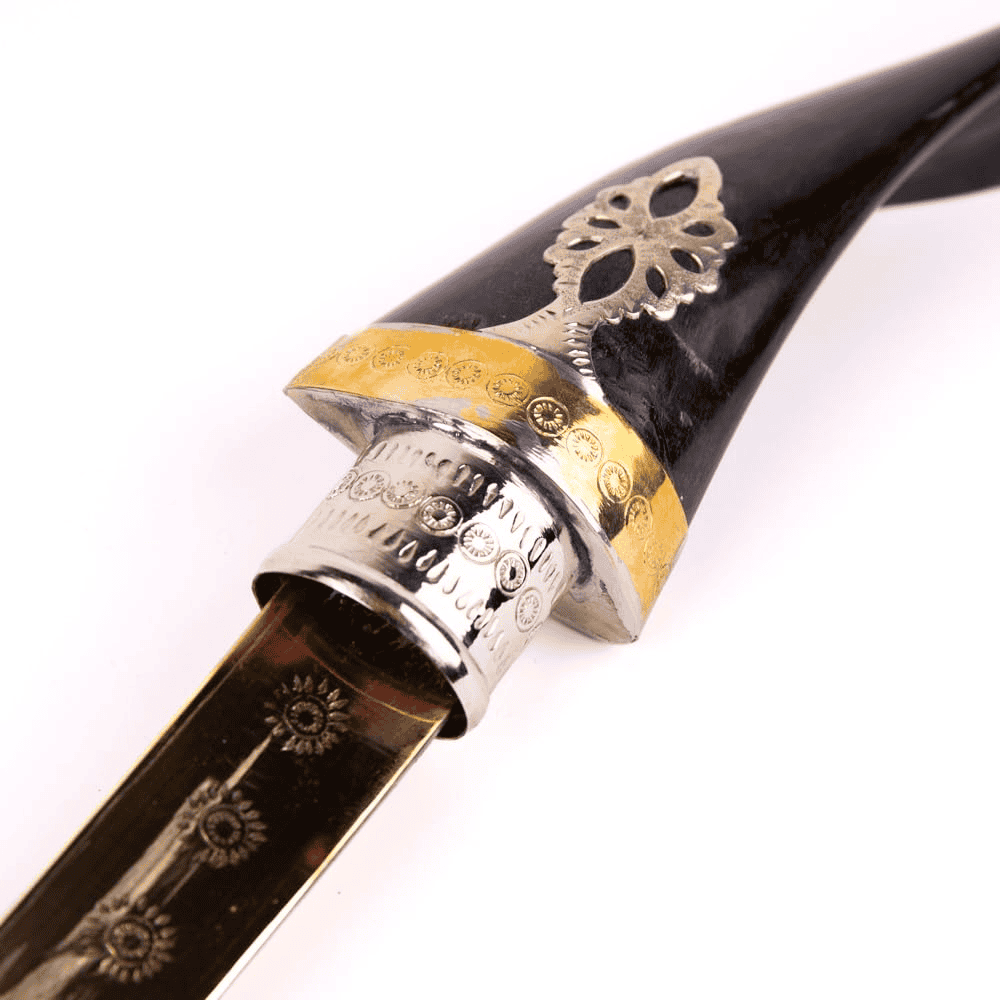
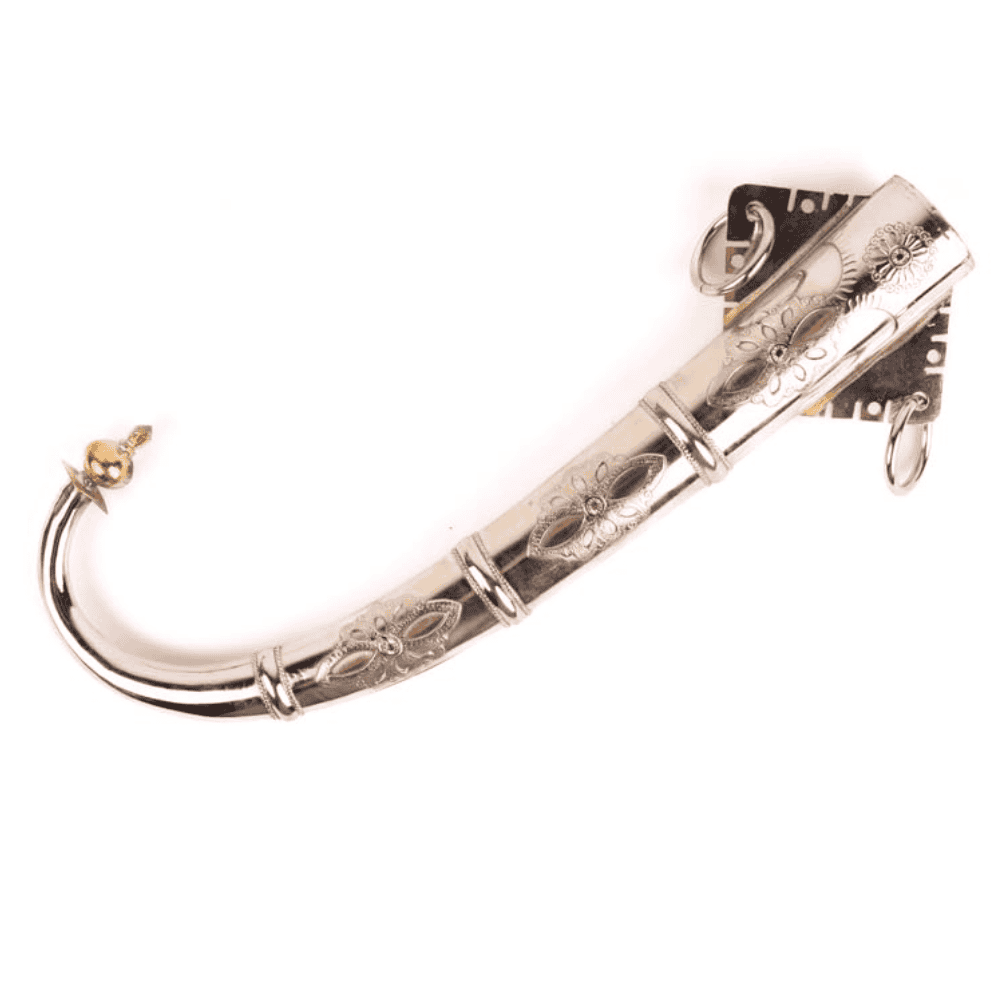
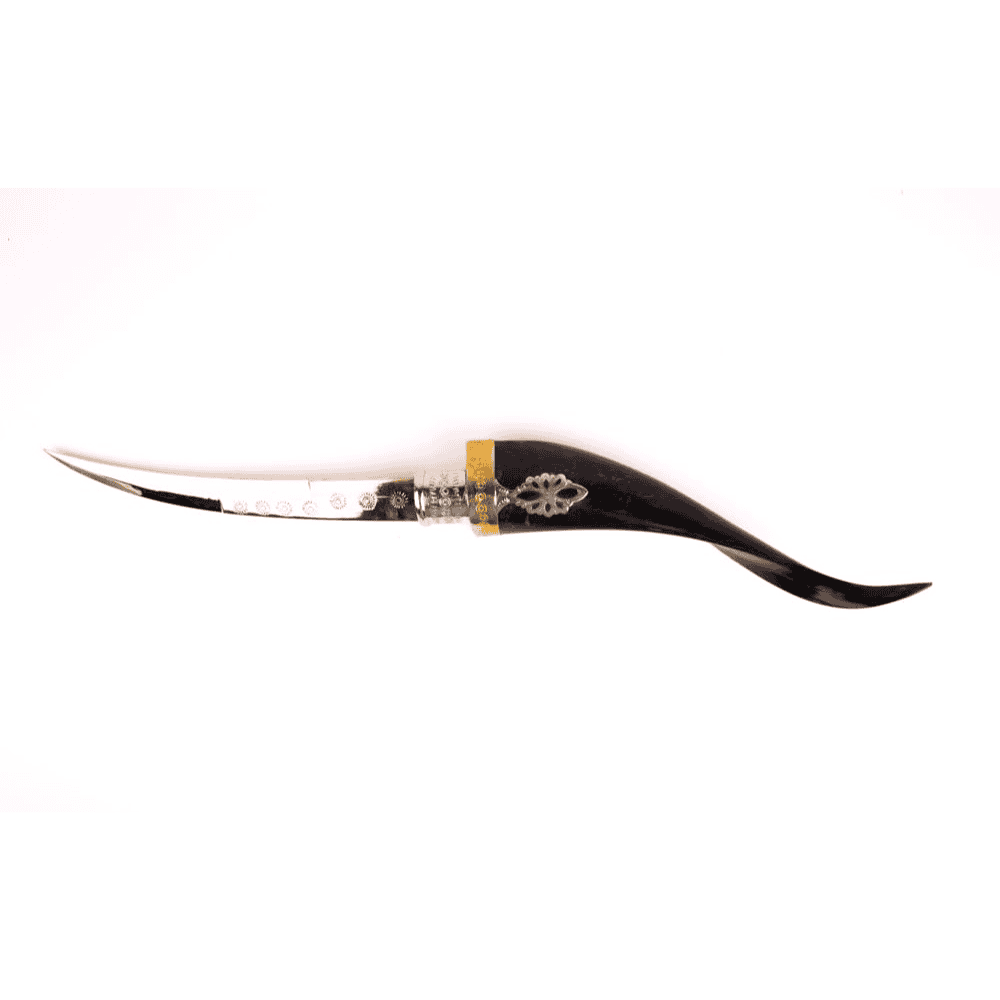
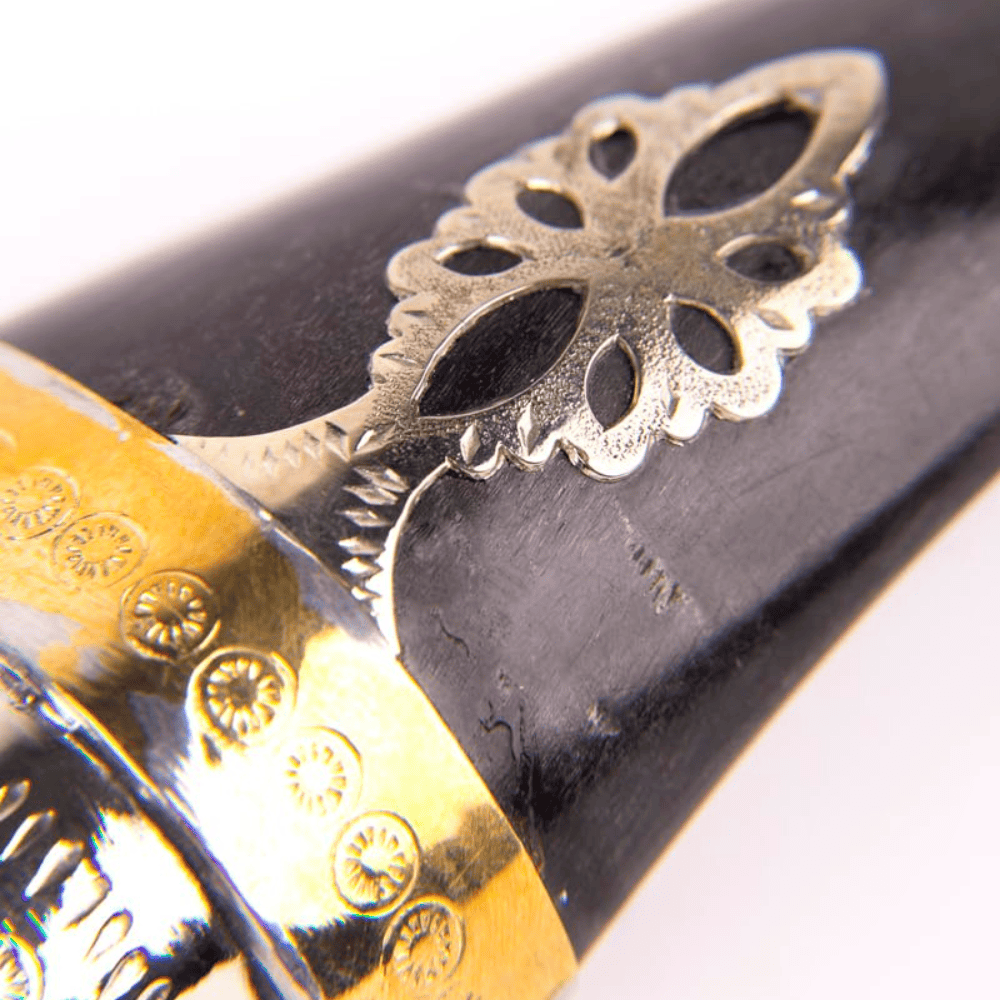
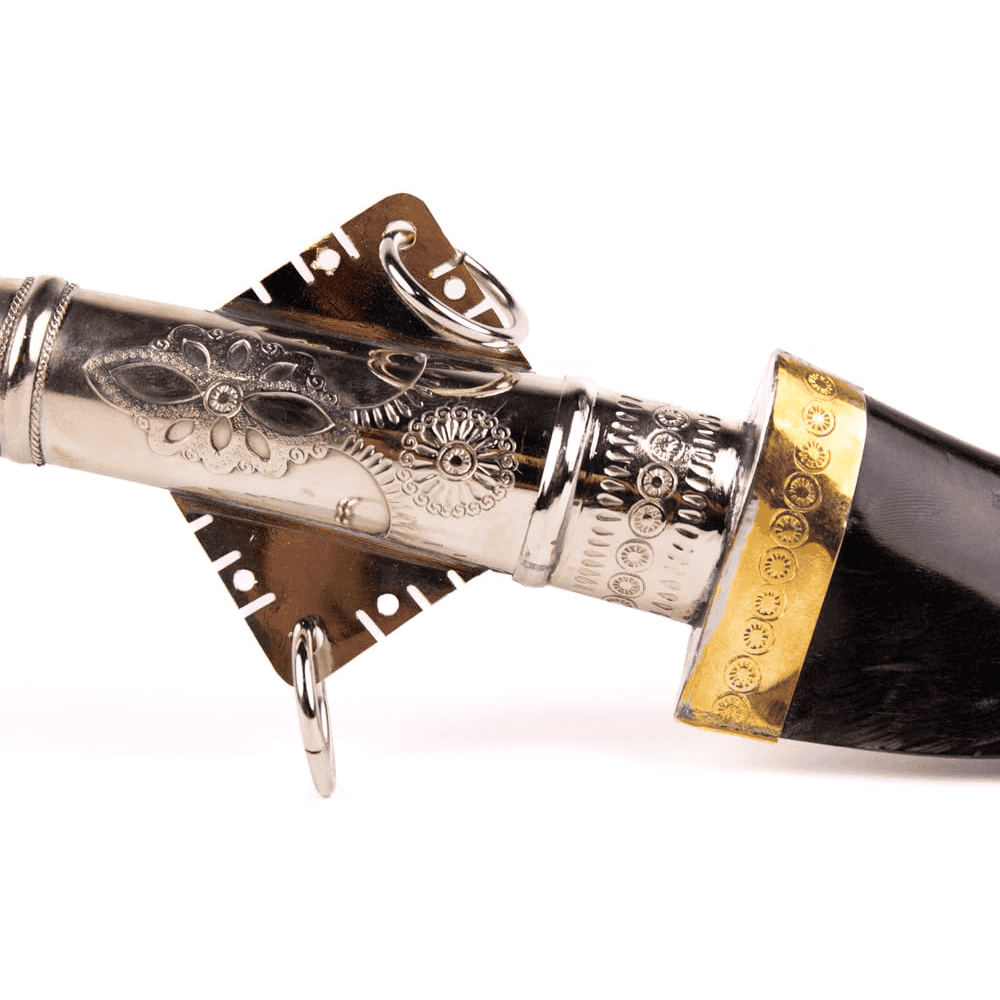
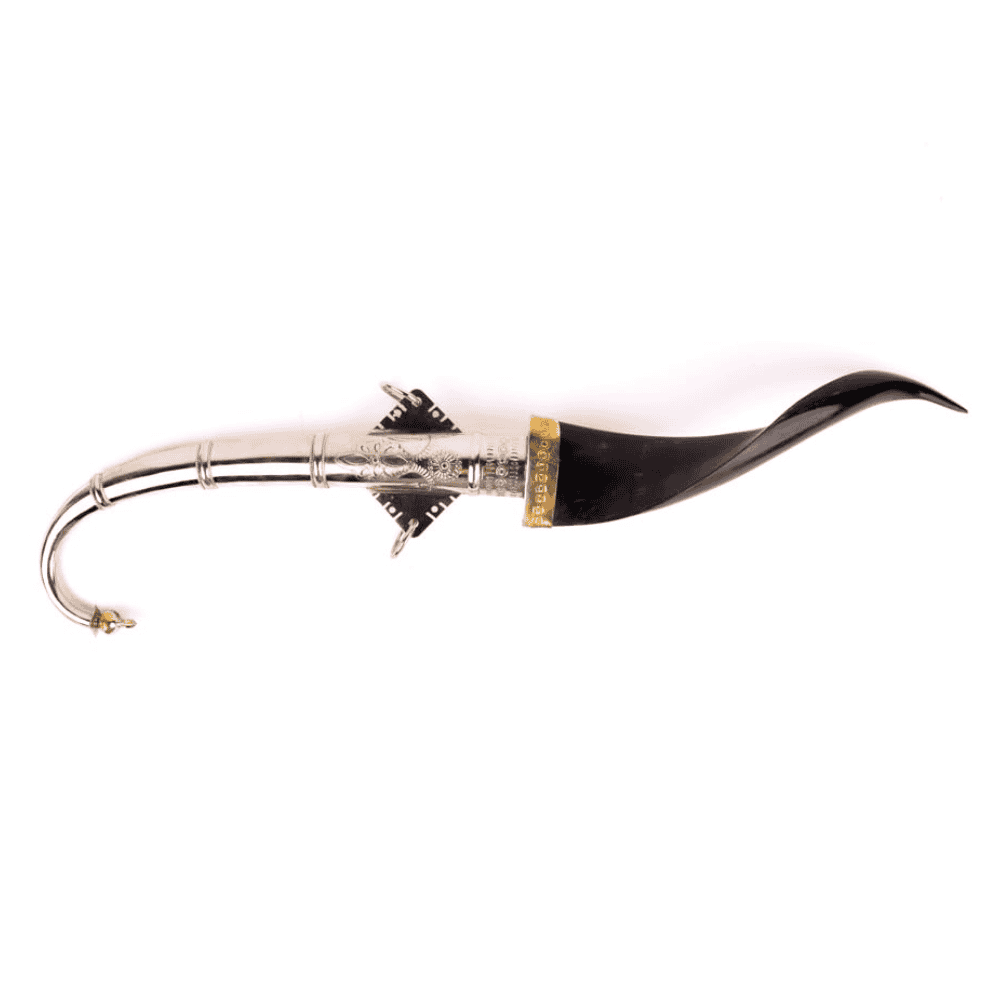
Reviews
There are no reviews yet.